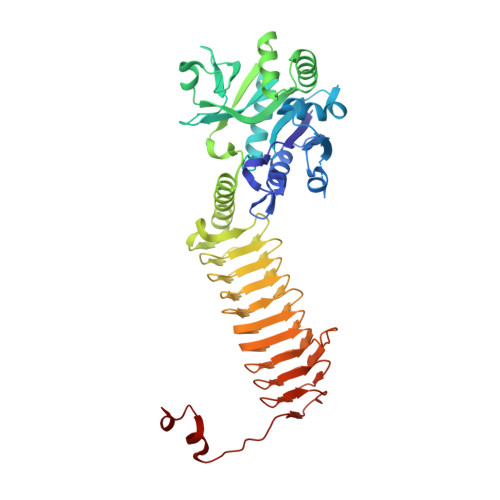Dysregulation of Streptococcus pneumoniae zinc homeostasis breaks ampicillin resistance in a pneumonia infection model.
Brazel, E.B., Tan, A., Neville, S.L., Iverson, A.R., Udagedara, S.R., Cunningham, B.A., Sikanyika, M., De Oliveira, D.M.P., Keller, B., Bohlmann, L., El-Deeb, I.M., Ganio, K., Eijkelkamp, B.A., McEwan, A.G., von Itzstein, M., Maher, M.J., Walker, M.J., Rosch, J.W., McDevitt, C.A.(2022) Cell Rep 38: 110202-110202
- PubMed: 35021083
- DOI: https://doi.org/10.1016/j.celrep.2021.110202
- Primary Citation of Related Structures:
7KR9 - PubMed Abstract:
Streptococcus pneumoniae is the primary cause of community-acquired bacterial pneumonia with rates of penicillin and multidrug-resistance exceeding 80% and 40%, respectively. The innate immune response generates a variety of antimicrobial agents to control infection, including zinc stress. Here, we characterize the impact of zinc intoxication on S. pneumoniae, observing disruptions in central carbon metabolism, lipid biogenesis, and peptidoglycan biosynthesis. Characterization of the pivotal peptidoglycan biosynthetic enzyme GlmU indicates a sensitivity to zinc inhibition. Disruption of the sole zinc efflux pathway, czcD, renders S. pneumoniae highly susceptible to β-lactam antibiotics. To dysregulate zinc homeostasis in the wild-type strain, we investigated the safe-for-human-use ionophore 5,7-dichloro-2-[(dimethylamino)methyl]quinolin-8-ol (PBT2). PBT2 rendered wild-type S. pneumoniae strains sensitive to a range of antibiotics. Using an invasive ampicillin-resistant strain, we demonstrate in a murine pneumonia infection model the efficacy of PBT2 + ampicillin treatment. These findings present a therapeutic modality to break antibiotic resistance in multidrug-resistant S. pneumoniae.
- Department of Molecular and Biomedical Science, School of Biological Sciences, University of Adelaide, Adelaide, SA 5005, Australia.
Organizational Affiliation:




















